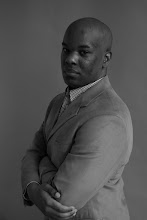Kobe Bryant Does Not Deserve To Be In the MVP Race
Yes, Kobe Bryant is currently leading the league in scoring with 28.7 points per game, but he is doing so in such an inefficient manner that it actually precludes him from being considered even the most valuable player on his own team.
Bryant is not leading the NBA in scoring because he is shooting the ball well; he is leading the NBA in scoring because he is taking a lot of shots. In fact, according to Basketball-Reference.com, Bryant has taken the most field goal attempts this season and it is not even close. Bryant has attempted 903 shots this year, which is 155 more than the second-place player, Kevin Durant, has attempted.
To put that extreme difference into context, between first and second in field goal attempts is almost as great as the difference between second and tenth in the same category (157 FGA).
One would hope that the person who is taking the most shots in the NBA would also lead it in scoring, although it is not like Bryant is even leading the league by scoring by that much despite his enormous advantage in the number of shots he hoists up every night. He only has a .6 points per game edge over Durant's 28.1 points per game, underscoring just how inefficient a scorer Bryant has been.
Bryant is attempting all these shots despite the fact he currently has the lowest effective field goal percentage (46.7 eFG%) and true shooting percentage (52.7 TS%) of his career so, in essence, he is hurting the team with all his field goal attempts more than he is helping them.
His shooting woes are so problematic to his performances that Bryant's offensive rating this season of 104 points produced per 100 possessions is his lowest since his rookie season and his win shares per 48 minutes (.157) are the fifth-lowest of his 15-year career and his worst mark in that category since the 2004-05 season.
To suggest Bryant is worthy of being discussed in the MVP race is ludicrous when one considers just how poorly a season he is having compared to other seasons he has had in a career that is frankly absent of many MVP-caliber seasons.
While Kobe Bryant is not even measuring up well to his usual production, when you compare him to the players who truly deserve to be discussed as MVP candidates, he looks even worse.
Using Basketball-Reference's win shares per 48 minutes statistic, which is vastly superior to PER since it does not reward production totals over efficiency, finds that Bryant is not even in the top 20, and he only shows up as 17th in win shares (4.7) because of all the minutes he has played this year.
There is no objective evidence one could use to make the case that Bryant is a possible MVP as everything shows that while he is still better than the vast majority of NBA players, he is not in the upper echelon of players this season.
Labels: Kobe Bryant, Los Angeles Lakers, NBA
